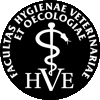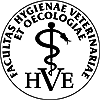Native preparation, phase contrast
TASK 1: Ciliates (Infusoria)
Native preparation (NP): hay infusion (or ciliates from soil)
Take a water drop from the hay infusion surface, place it on a slide glass and cover with a cover glass so as not to form air bubbles. Observe the fast moving protozoans, especially ciliates, flagellates and also bacteria, vinegar worms or flatworms. Mistakes that can be made: too much water results in vibrations or drifting of the objects away from visual field, a wet lower side of the slide (and thus wet stage) leads to the impaired control of the specimen movement; lack of water results in air bubbles forming and drying of the sample.
Infusoria are named after hay infusion (water, hay, decomposing plants and leaves, soil) in which they can be found. In hay there are cysts of infusorians that give rise to active ciliates.

Fig.: Soil organisms.
TASK 2: Phase contrast microscopy
NP: ciliates or pollen grains
Prepare microscope for observation in the phase contrast and then observe ciliates (or pollen grains). Observation in phase contrast increases contrast of colourless structures.
TASK 3: Digestion and contractile vacuoles of protozoans
NP: hay infusion - water surface with ciliates (infusorians) and numerous bacteria
Take a water drop from the hay infusion surface; put it on a slide glass, stain with 0.1 % neutral red (possibly causing death of protozoans after some time) and cover with a cover glass. Observe the contractile vacuole (for osmoregulation), colorless round structures near a pole of a ciliate alternately increasing size and disappearing after emptying to the outer environment. Fast motion of ciliates can be slowed down by soaking off the excessive water using a filter paper.
TASK 4: Digestive vacuoles
PP: digestive vacuoles containing charcoal – "potravní vakuoly"
The ciliate Paramecium (Paramecium sp.) was cultured in a medium containing charcoal. The digestive vacuoles are stained black due to charcoal contained in them.

Fig.: Ciliate with digestive and contractile vacuoles. A – native staining, B – stained with charcoal.
Content
- Biology
- Chemical composition
- Non-cellular life
- Prokaryotes and immersion microscopy
- Eukaryotes
- Movement and irritation
- Transport of substances, osmosis
- Mitosis
- Reproduction and development
- Influence of surroundings onto the bioplasm
- Research methods in biology
- Genetics
- Cytogenetics
- Model organism
- Monohybridism
- Polyhybridism
- Polymorphic genes
- Gene interactions
- Inheritance and sex
- Genetic linkage
- Population genetics
- Quantitative genetics
- Nonmendelian inheritance


